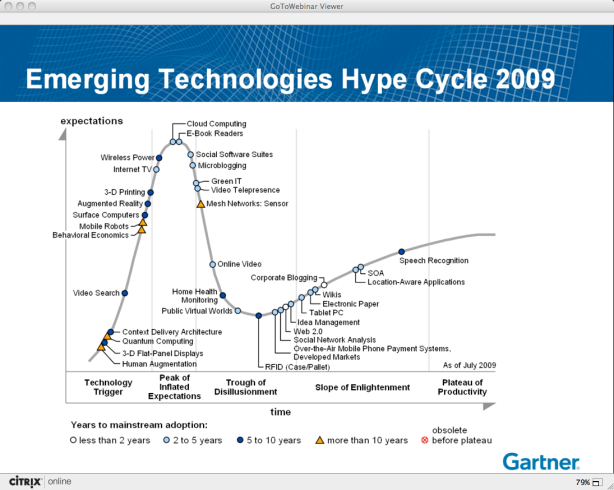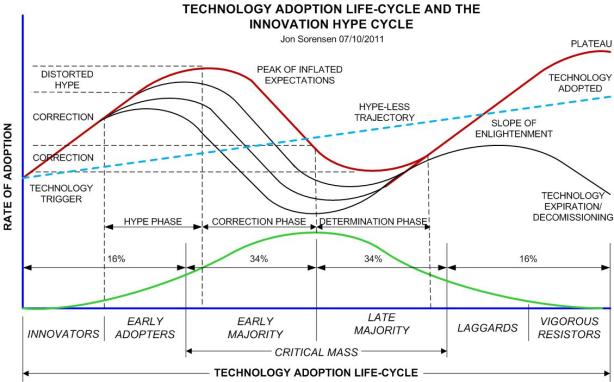In today’s world of rapid innovation and the associated emergence of new technologies capable of supporting the construction and operations of transportation systems, it’s importation that all ITS practitioners keep one eye trained on state-of-the-art technologies and one eyed trained on the technological horizon. Numerous tools have been generated over the years aimed at assisting technology professional in charting the technology landscape. Two mainstream models include the Technology Adoption Life-cycle graph and the Hype Cycle graph.
The Technology Adoption life-cycle is a graphical model that represents the social tendencies for the adoption of new technologies. The model was originally developed by Joe M. Bohlen, George M. Beal and Everett M. Rogers at Iowa State University in 1957. The Hype Cycle, originally developed and characterized by Gartner in 1995, is a graphic representation of the evolution (life-cycle) of technologies and the social adoption rates related to those technologies. Examples of the hype cycle and innovation life-cycle can be clearly illustrated by the Internet and fiber optics/telecom bubbles of a decade ago. These technologies ultimately won out, but had to endure an early “busted bubble” before being firmly adopted.
.
The ability to accurately map new or potential future technologies to these graphical models enables one to better understand the social characteristics of each technology, and provide tools for generating forecasts for a technology’s likelihood to take root, continue to evolve, or even identify those technologies that are losing steam.




These forecasts look rather simplistic relative to today’s models. Peaks arrive faster, cut off by new, emerging disruptive technologies. For some companies/technologies all there is is the initial hype peak – no recovery. This means there is no time to wait, but it also means you can always catch the NEXT wave. I believe this is what Nokia is counting on.